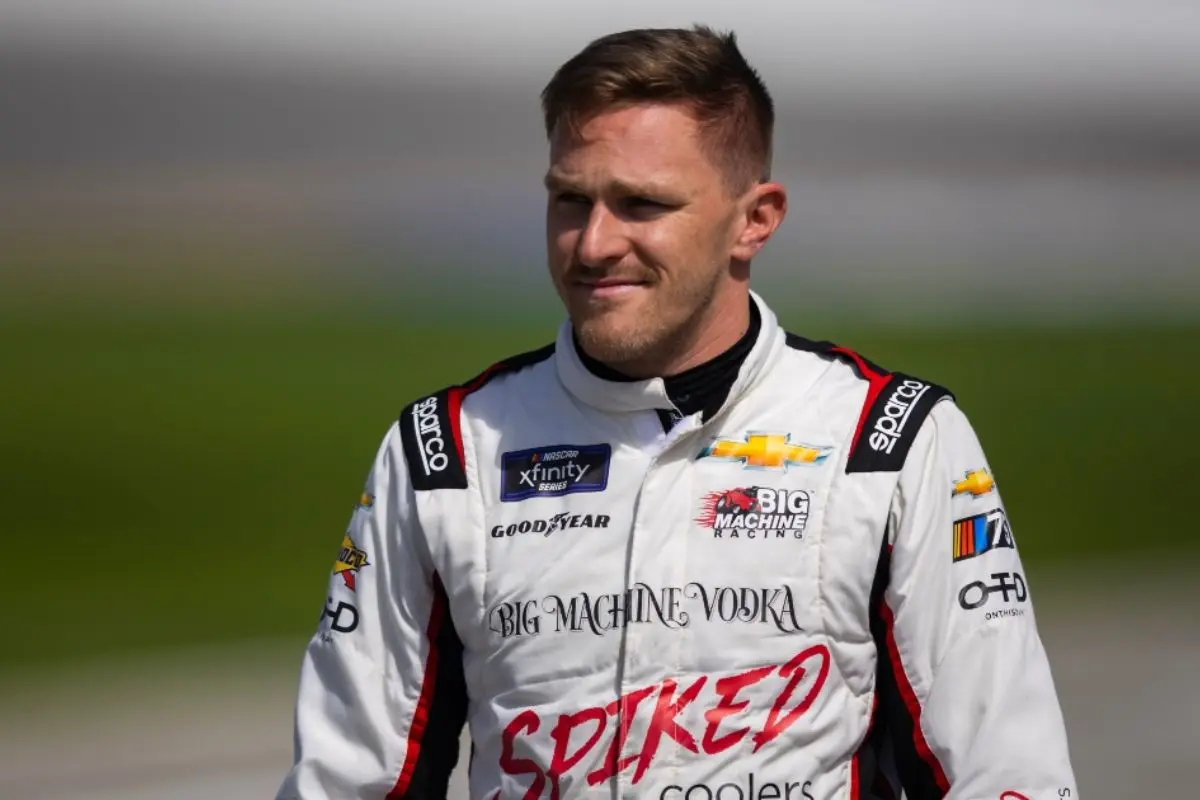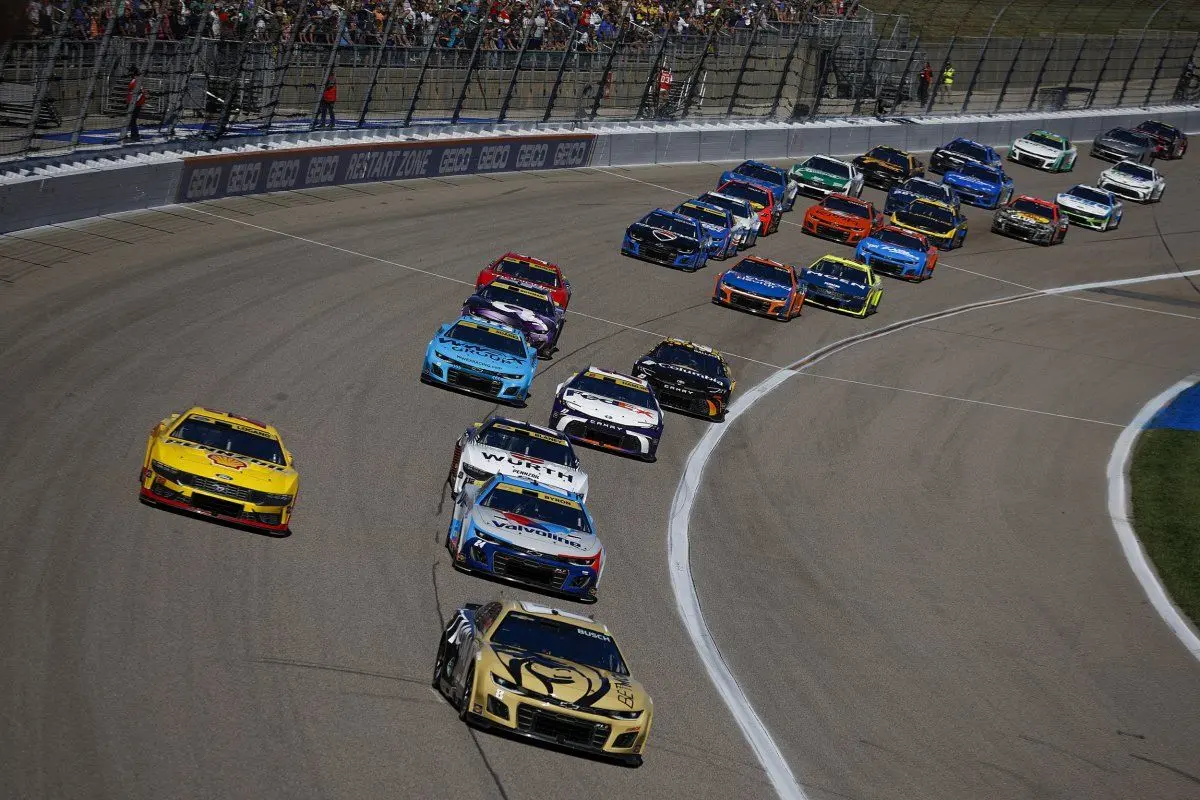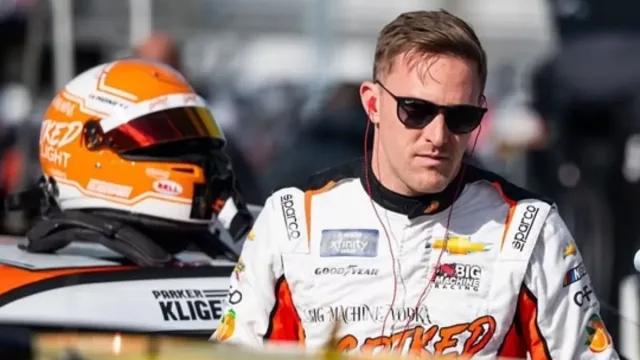Parker Kligerman Rips NASCAR’s Power Cuts: Parker Kligerman, a seasoned NASCAR professional, has fiercely criticized recent power reductions in the sport, asserting they’ve dulled the thrill of racing. With a diverse career spanning multiple car generations, Kligerman highlights the negative impact these cuts, from 900 to 670 horsepower, have on race dynamics and fan enthusiasm. The move towards safety, starting with the Car of Tomorrow, is seen by many, including Kligerman, as compromising excitement.
Key Highlights
- Parker Kligerman criticizes NASCAR’s power cuts, claiming they lead to less exciting racing experiences for fans.
- Kligerman’s insights highlight a broader fan dissatisfaction with reduced horsepower in NASCAR vehicles.
- He argues that higher horsepower could enhance the spectacle and engagement of NASCAR races.
- The debate includes concerns about balancing innovation, tradition, and competitive racing dynamics.
- Kligerman’s comments reflect ongoing discussions about maintaining NASCAR’s excitement without compromising safety.
Parker Kligerman’s NASCAR Experience
Parker Kligerman’s deep-rooted experience in NASCAR provides him with a distinctive perspective on the sport’s evolving landscape. With over 13 years in the racing circuit, including notable stints in both the Xfinity Series and the Cup Series, Kligerman has amassed a wealth of knowledge about the intricacies and dynamics of NASCAR.
His expedition has seen him traverse through multiple generations of NASCAR vehicles, offering him firsthand insight into the technological and regulatory shifts that have shaped the sport. Kligerman’s career has spanned the shift from the Car of Tomorrow (COT), through the Gen-6, and most recently to the Next Gen vehicles.
This progression has not only honed his skills behind the wheel but has also broadened his understanding of how changes in vehicle design and engineering impact racing performance and strategy. His tenure with these diverse iterations of cars provides him with a thorough understanding of the challenges and opportunities presented by each era of NASCAR innovation.
His extensive experience allows Kligerman to critically assess the implications of NASCAR’s regulatory decisions, particularly regarding power reductions and their effect on race dynamics. Having driven through different technological paradigms, Kligerman is distinctly positioned to evaluate how power cuts affect competitiveness and driver experience.
His insights are not merely theoretical; they are grounded in years of practical experience, offering a detailed perspective that resonates with those who appreciate the finer details of NASCAR evolution. Kligerman’s voice is therefore an authoritative one in discussions about the balance between innovation and tradition in racing.

The Car of Tomorrow and Its Legacy
Introduced as a groundbreaking step in NASCAR’s evolution, the Car of Tomorrow (CoT) left an indelible mark on the sport’s history with its focus on driver safety and vehicle standardization. Born from the tragic necessity to improve driver protection after the loss of Dale Earnhardt in 2001, the CoT was a response to the mounting demands for enhanced safety measures within the high-stakes world of stock car racing. Developed over five years, this model became the hallmark of the fifth-generation car style, deployed in NASCAR’s Cup Series from 2007 to 2012.
The CoT’s design highlighted a paradigm shift, prioritizing safety with features like the energy-absorbing front clip and reinforced cockpit areas. Such innovations marked a notable departure from earlier models, reflecting NASCAR’s commitment to safeguarding its drivers.
However, this focus on uniformity and safety came at a cost. The CoT faced criticism for its lack of aesthetic appeal and its departure from the distinct brand identities that fans and manufacturers cherished. Consequently, NASCAR Chairman and CEO Brian France admitted the model fell short of expectations, ultimately phasing it out in 2013.
The COT for as bad it was on the outside, was still an insane racecar to drive. In my thousands of miles testing at Penske
Every early 7am start with 850HP+ at your disposal was always epic.
No matter how many times you drove it, there was always an adjustment to the power https://t.co/6VMaRiiA28
— Parker Kligerman (@pkligerman) December 29, 2024
Despite its contentious reception, the CoT’s legacy is inextricably linked to its role in steering NASCAR towards safer racing. While it may not have captured the hearts of traditionalists, its contributions to driver safety cannot be minimized.
The CoT era therefore serves as a poignant reminder of the delicate balance between innovation and tradition, a challenge that continues to shape NASCAR’s evolution in the quest for progress and safety.
Parker Kligerman Reflects on Driving the CoT
Reflecting on the often controversial Car of Tomorrow, Parker Kligerman provides a detailed perspective that intertwines nostalgia with specialized admiration. Known for its robust power and unique handling challenges, the CoT was a veritable beast on the track, demanding a synergy of skill and precision from its drivers. Kligerman’s engagement with a fan-shared video, spotlighting Jimmie Johnson’s skill at Road Atlanta, emphasizes a collective reverence for the era’s demanding driving conditions. The CoT’s 850hp engine wasn’t just a statistic—it was an experience, a trial of mettle for any driver who dared to tame it.
“The COT for as bad it was on the outside, was still an insane racecar to drive. In my thousands of miles testing at Penske Every early 7am start with 850HP+ at your disposal was always epic. No matter how many times you drove it, there was always an adjustment to the power.” – Parker Kligerman
Kligerman’s insights reveal a duality—the CoT, much maligned for its aesthetic and aerodynamic quirks, was nonetheless a thrilling machine that tested a driver’s adaptability and audacity. His recollection of early morning tests at Penske, where the raw power was both a challenge and a thrill, highlights the intricate balance between fear and mastery inherent in driving such a car.
In Kligerman’s narrative, the CoT emerges as a symbol of an era when raw power and driving skill were paramount. His reflections serve not only as a historical account but as a reminder of the visceral connection between driver and machine, a connection he implies is lacking in today’s more subdued racing environments.
 Big Machine Racing” width=”1200″ height=”800″ srcset=”https://slicksandsticks.com/wp-content/uploads/2024/12/Parker-Kligerman-Teams-up-With-Elite-Racing-Team.webp 1200w, https://slicksandsticks.com/wp-content/uploads/2024/12/Parker-Kligerman-Teams-up-With-Elite-Racing-Team-300×200.webp 300w, https://slicksandsticks.com/wp-content/uploads/2024/12/Parker-Kligerman-Teams-up-With-Elite-Racing-Team-1024×683.webp 1024w, https://slicksandsticks.com/wp-content/uploads/2024/12/Parker-Kligerman-Teams-up-With-Elite-Racing-Team-768×512.webp 768w, https://slicksandsticks.com/wp-content/uploads/2024/12/Parker-Kligerman-Teams-up-With-Elite-Racing-Team-630×420.webp 630w, https://slicksandsticks.com/wp-content/uploads/2024/12/Parker-Kligerman-Teams-up-With-Elite-Racing-Team-150×100.webp 150w, https://slicksandsticks.com/wp-content/uploads/2024/12/Parker-Kligerman-Teams-up-With-Elite-Racing-Team-696×464.webp 696w, https://slicksandsticks.com/wp-content/uploads/2024/12/Parker-Kligerman-Teams-up-With-Elite-Racing-Team-1068×712.webp 1068w” sizes=”auto, (max-width: 1200px) 100vw, 1200px” />
Big Machine Racing” width=”1200″ height=”800″ srcset=”https://slicksandsticks.com/wp-content/uploads/2024/12/Parker-Kligerman-Teams-up-With-Elite-Racing-Team.webp 1200w, https://slicksandsticks.com/wp-content/uploads/2024/12/Parker-Kligerman-Teams-up-With-Elite-Racing-Team-300×200.webp 300w, https://slicksandsticks.com/wp-content/uploads/2024/12/Parker-Kligerman-Teams-up-With-Elite-Racing-Team-1024×683.webp 1024w, https://slicksandsticks.com/wp-content/uploads/2024/12/Parker-Kligerman-Teams-up-With-Elite-Racing-Team-768×512.webp 768w, https://slicksandsticks.com/wp-content/uploads/2024/12/Parker-Kligerman-Teams-up-With-Elite-Racing-Team-630×420.webp 630w, https://slicksandsticks.com/wp-content/uploads/2024/12/Parker-Kligerman-Teams-up-With-Elite-Racing-Team-150×100.webp 150w, https://slicksandsticks.com/wp-content/uploads/2024/12/Parker-Kligerman-Teams-up-With-Elite-Racing-Team-696×464.webp 696w, https://slicksandsticks.com/wp-content/uploads/2024/12/Parker-Kligerman-Teams-up-With-Elite-Racing-Team-1068×712.webp 1068w” sizes=”auto, (max-width: 1200px) 100vw, 1200px” />
Fan Reactions and Criticisms of NASCAR’s Changes
While Parker Kligerman‘s reflections on the Car of Tomorrow highlight an era of raw power and skill, the current sentiment among fans reveals a contrasting disillusionment with NASCAR’s recent changes. The shift from high-octane, adrenaline-fueled races to what some perceive as overly sanitized competitions has sparked a fervent discourse among enthusiasts.
The voices of the fans are an indication of the widespread unease regarding NASCAR’s direction. Here are some key perspectives:
- Reduced Excitement: A prevailing sentiment is that NASCAR’s decision to reduce power and increase grip has diluted the essence of the sport. Fans argue that this has led to less thrilling races, with one fan sarcastically noting the shift to “way less power, way too much grip.”
- Loss of Tradition: Many fans lament the departure from the powerful Cup cars of the past. Comments such as “So glad NASCAR neutered the Cup cars” reflect a nostalgia for a bygone era of racing excitement and unpredictability.
- Tactical Missteps: Critiques are not just emotional but also tactical. One opinion labels the reduction in horsepower as “idiotic,” suggesting that NASCAR’s adjustments may have been a miscalculation in balancing competitiveness and safety.
- Missed Opportunities: Fans believe NASCAR had previously achieved a near-perfect formula with prior iterations of the vehicles, including the Gen 6 model, which some argue offered the right mix of power and performance.
The Debate on Horsepower Reductions
Frequently at the heart of heated discussions within the NASCAR community is the issue of horsepower reductions, a topic that has polarized opinions since its inception. The contentious debate began in earnest in 2015, when NASCAR initially scaled back engine output from 900 to 750 horsepower through the use of tapered spacers. With the introduction of the Next Gen car in 2022, the power was further reduced to a cap of 670 horsepower, igniting fresh debates about the impact on racing dynamics and general excitement.
Proponents of increased horsepower, including renowned drivers such as Kyle Larson and Denny Hamlin, argue that a return to 750 horsepower could revitalize the sport. They claim that higher power improves the spectacle, intensifying the skill and strategy required to navigate the track. According to them, the financial implications of such a change would be minimal, especially when weighed against the potential to reinvigorate fan interest and engagement.
In contrast, NASCAR officials caution that reverting to previous horsepower levels could introduce a slew of challenges. The increased strain on engines might lead to higher costs related to maintenance and repairs. Moreover, the current regulations have been designed to balance competition and safety, factors that are integral to maintaining the sport’s integrity.
Thus, the debate over horsepower reductions is not merely a specialized discourse but a crucial discussion about the future of NASCAR itself. As stakeholders continue to deliberate, the challenge remains to find a harmonious balance that satisfies competitive integrity without compromising the thrilling essence of the sport.

News in Brief: Parker Kligerman Rips NASCAR’s Power Cuts
The discourse surrounding NASCAR’s modifications, particularly the reduction in horsepower, emphasizes a broader tension between innovation and tradition within the sport. Parker Kligerman’s critique highlights a growing concern regarding the impact of such changes on competitive dynamics and spectator engagement. This debate invites an examination of the balance between safety, performance, and entertainment value in motorsports. Ultimately, NASCAR’s path will depend on its ability to reconcile these competing demands while preserving the essence that has historically captivated its audience.
ALSO READ: Parker Kligerman Teams up With Big Machine Racing to Conquer the 2025 Rolex 24 Daytona
